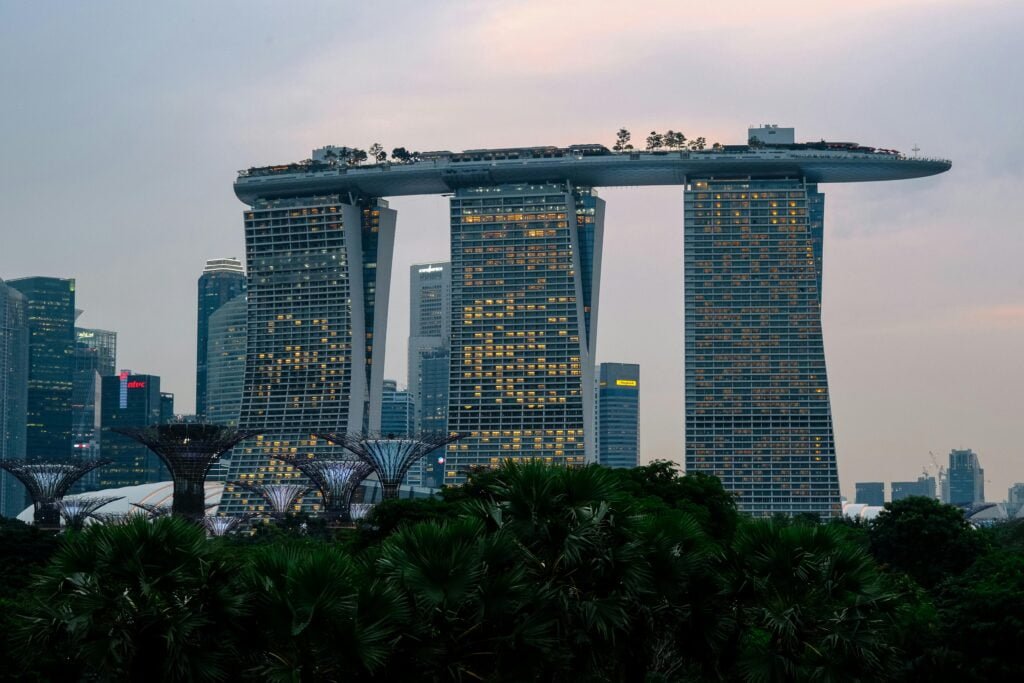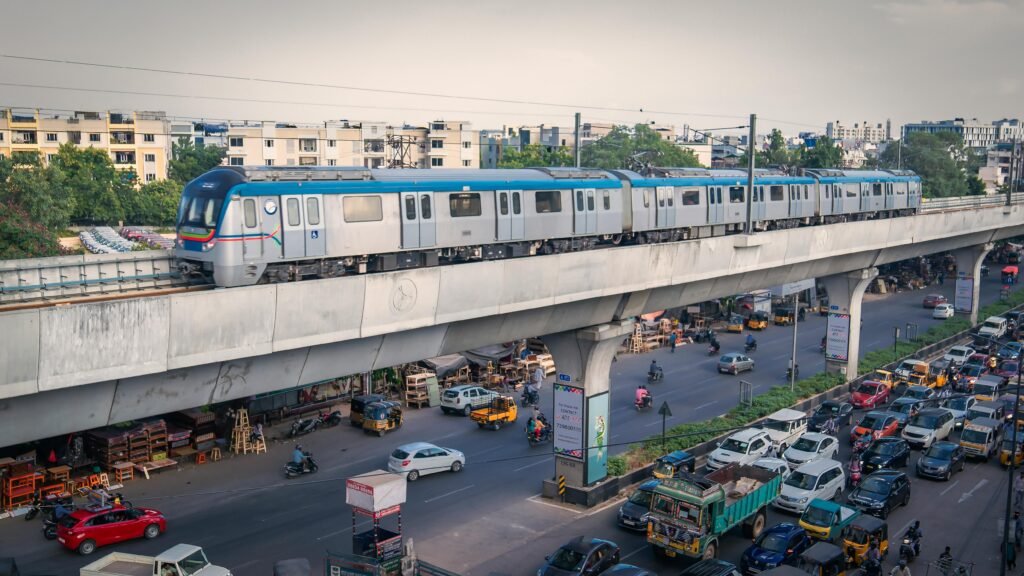Introduction to Green Building and Sustainable Architecture
Green building and sustainable architecture are strong approaches toward modern construction. They minimize the impact of buildings on the environment. These practices focus on the use of environmentally friendly materials and energy efficiency in designs. This way, they eventually lead to the development of structures that fulfil human needs while conserving nature. Some of the key features of these practices include minimizing waste, maximizing energy use, and a long-term strategy of sustainability.
Resource Efficiency
Basically, the concept of green building is built upon the idea of resource efficiency. It, therefore, involves careful choice of nontoxic, renewable, and materials that have a minimal footprint on the environment. Among the often-used materials in green construction are recycled steel, bamboo, and reclaimed wood. All of these materials are durable while significantly reducing the demand for new resources.
Energy Efficiency
It is another aspect of sustainable architecture. The green buildings try to reduce their energy consumption and releases of greenhouse gases by using exceedingly advanced technologies and innovative design approaches. One of the measures includes high-performance insulation, energy-efficient windows, and solar panels. Such measures will ensure that buildings keep comfortable internal climates while relying as little as possible on fossil fuels.
Design and Orientation
Green architecture again, puts a lot of emphasis on design and orientation. Buildings should be placed strategically in such a way that maximum natural daylighting, minimum heat loss, and enhancement of ventilation can be achieved. That saves energy and provides healthier space to live in. Finally, we can add green spaces like rooftop gardens and vertical forests in the building and this would help in improving air quality and urban biodiversity.
We need to understand the basic principles of green building and sustainable architecture so that we can build a greener, more sustainable future. The idea behind implementing these practices into creating our buildings supports human health, minimizes adverse impacts on the environment, and help in reducing carbon footprints.
The Impact of Traditional Building Practices on the Environment
Traditional building practices of building houses can hurt the environment. Let us look into it.
High Energy Consumption
One main issue is the significant energy consumption in the conventional building construction methods. Most construction activities rely on fossil fuels throughout the lifecycle of a building, from raw material production to transportation, construction, and then operation. All this tends to increase the carbon footprint associated with it. It only adds up to the continuous usage of fossil fuel, and this contributes to global warming, bringing various problems for the environment.
Use of non-renewable Resources
The next important issue is the use of non-renewable resources. The traditional buildings majorly consist of materials like concrete, glass, and steel. All these materials have utilized a lot of energy in their production process, besides causing harsh damage to the environment. The extraction and processing of the natural resources destroys habitats, cause soil erosion, and water pollution. So, it also leads to environmental degradation.
Waste Generation
Furthermore, conventional construction generates a lot of waste. The processes of constructions and demolitions produce large amounts of wasteful materials of concrete, wood, metals, as well as harmful substances, thus filling the landfills in the end. This leads to wasting precious land and causes serious hazards to both air and water quality because of leaching of harmful substances. Add to it, improper waste management contributes to pollution and generates greenhouse gases that negatively affect the atmosphere.
All of these impacts add up be it high energy consumption, reliance on non-renewable resources, and excessive waste generation. This shows us that we need to change our building strategies. Thus, there comes into the picture these green building practices. They support reducing environmental impacts with practices such as energy efficiency, material sustainability, and waste reduction. We can build a more resilient greener future for ourselves if we adopt the sustainable architecture.
Green Building Principles
Sustainable building design focuses on a set of key principles that take into account the reduction in environmental impact while maximizing effectiveness and well-being of the people living in it.
Careful Site Selection
One of the most important principles is careful site selection. Green buildings must be selected in the sites with the least degree of disturbance to the natural ecosystem, which would lead to less environmental impact of that building project. Easy access for public transport, cycling, and walking reduces the dependency on fossil fuels.
Water Conservation
Another principle is that of good water management. Sustainable buildings, most of times, use technologies that encourages the efficient use of water. This involves using low-flow fixtures, dual-flush toilets, and collection and use of rainwater or greywater. Water savings protect the environment and may even reduce your water bill.
Energy Conservation
It is equally important in green building design. Techniques such as passive solar design that maximize natural light and heat, high-performance insulation, and energy-efficient windows might reduce artificial heating and cooling. Renewable energy sources add to the sustainability profile of the building. Renewable energy may include the use of solar panels or wind turbines.
Use of Sustainable Materials
This is another crucial factor. This involves selecting materials that are recycled, sourced locally, or manufactured in ways that minimize environmental impacts. For example, using reclaimed wood or recycled metal reduces the demand for new resources and decreases the environmental cost of extraction and manufacturing. Also, materials that have low volatile organic compound (VOC) emissions promote better indoor air quality and healthier living conditions.
This type of principles in building designs will provide environmental sustainability with economic benefits in saving operational cost. Such a practice will also create a healthy and comfortable living and working environment, thus showing comprehensive approach towards sustainability.
Benefits of Green Building and Sustainable Architecture
Green building and sustainable architecture offer lot of advantages, from economic savings to significant environmental impacts.
Reduction in Energy Costs
It highly reduces the cost of energy. Renewable energy sources and energy-saving technologies such as solar and wind power are employed by green buildings, reducing utility expenses drastically. Green buildings maximize the utilization of natural light and air. They minimize artificial heating and cooling and as a result, reduce the use of energy.
Improved Indoor Air Quality
Green buildings lead to bettering indoor air quality. From low-emitting materials to a more advanced ventilation system, pollutants and allergens in the indoor space are minimized while creating healthier spaces. This is a contributory factor to people’s health; it reduces many of the respiratory problems in addition to other health cases caused by poor indoor spaces. It impacts people in terms of their mental well-being as well. People often report reduced stress levels and increased comfort in sustainably designed spaces.
Improved Health and Productivity
People who work or live in green buildings often feel healthier and work harder. This is because green buildings are better for your body and mind. They often have things like plants and natural light, which can make you feel happier and think more clearly.
Reduced Environmental Impact
Sustainable architecture helps in the reduction of the overall environmental footprints of a building by minimizing waste, promoting recycling, and conserving natural resources. This includes the use of sustainable materials like reclaimed wood, recycled metal, and low-impact materials that minimize demand on non-renewable resources. It also introduces water-saving fixtures and landscape designs using less water, further preserving the natural ecosystems.
In combination, these benefits demonstrate the dual economic and environmental advantages of green building and sustainable architecture. Through these, we can see the critical roles these practices play in making a healthier and more sustainable future for people and the planet.
Green Building Practices
Green building practices help to decrease the carbon footprint of structures.
Energy-Efficient Technologies
One of the most common ways they achieve this is through the use of efficient technologies. Innovations that include high-performance HVAC systems, smart thermostats, and LED lighting cut energy consumption remarkably. Building designs using natural ventilation and daylighting minimize the dependency on artificial lighting and air conditioning. Therefore, it directly reduces electricity use, and subsequently, carbon emission.
Renewable Energy Sources
Another major aspect of green buildings is the use of renewable energy such as sunlight and wind. The building can be provided with clean electricity through solar panels and wind turbines. This reduces pollution and greenhouse gases, which is good for the environment. Thus, making a significant contribution in fighting climate change.
Sustainable Materials
Sustainable materials are also very important green building practices. Using recycled, reclaimed, and locally sourced materials helps to avoid impacts on the environment due to extraction and transportation while encouraging the circular economy. Bamboo, reclaimed wood, and recycled metal possess lesser environmental footprints. In addition, green buildings rely more on materials with low embodied energy, which refers to that energy required to produce and transport it to the site. The lesser the embodied energy of a material, the lesser its carbon emissions will be throughout the building’s life cycle.
India is also doing very well with green building practices. One of the most prominent examples of this is the Godrej One building in Mumbai. This commercial complex has various sustainable features, including rainwater harvesting, solar panels, and energy-efficient lighting systems. Such initiatives have reduced the carbon footprint of the building, promoting sustainable urban development.
Another example is the IIT Gandhinagar campus in Gujarat. The institution has embraced green building principles in its infrastructure, so classrooms are energy efficient, the green roofs, and sustainable waste management practices. All this shows the commitment by India toward sustainable construction while conserving its environment.

Examples of Sustainable Building Projects Worldwide
Today, people are realizing how climate change has hurt the environment, thus creating more interest in green building that can help the planet.
Bullitt Center in Seattle, USA
It is an excellent example of a green building. The Bullitt Center uses solar panels for energy, and the rainwater is collected to be used as drinking water. More interestingly, there are special toilets that turn the waste into compost. These things make the building more energy-efficient and reduce pollution as well. It is good for other businesses to follow.
Bosco Verticale in Milan, Italy
Another interesting green building project is the Bosco Verticale in Milan, Italy. These two apartment buildings are covered with many trees and plants. The vegetation, which is estimated at about 900 trees and over 20,000 plants, helps in sequestering carbon dioxide and releasing oxygen. This helps in reducing urban heat island effects, enhancing the quality of life among residents, and cleansing air, reducing pollution, and making the area cooler. This is a good example of building green buildings in cities.
Marina Bay Sands in Singapore
The Marina Bay Sands in Singapore is one more such excellent example of a green building. It catches rainwater, conserves energy, and possesses many plants. These things help protect the environment and make the resort look beautiful. It shows how Singapore is committed to being a sustainable city.
One Central Park in Sydney, Australia
One Central Park in Sydney is a beautiful structure that is also environmentally friendly. It incorporates living walls, recycles water, conserves energy through natural light, and air uses. It has won awards for being a sustainable building, showing that green buildings can be both practical and attractive.
These examples indicate that building green is an important way of reducing the pollution and saving this environment. Green buildings are beautiful as well as practical at the same time. They show that us we can build our buildings in a way that is good for the planet.
Challenges and Barriers to Implementing Sustainable Building Practices
There are numerous challenges and barriers to green building and sustainable architecture. Let us look at them below.
Financial Constraints
The upfront cost of incorporating sustainable building practices is typically very expensive. This is the reason that stops many developers and contractors from adopting it. Such costs are usually comprised of investment in energy-efficient materials, advanced technologies, and specialized labor. Even though there could be a long-term saving benefit, upfront costs are relatively heavy, especially to smaller firms and individual developers.
Lack of Awareness
Lack of awareness also prevents the adoption of green building practices. Many stakeholders in the construction sector, including clients, architects, and contractors, may not be well-informed about the benefits of sustainable architecture. They may believe that green buildings cost a lot or do not serve their purpose well. As such, they often opt for traditional means of building instead of more environmental-friendly methods.
Resistance to Change
Resistance to change within the sector further complicates the shift to sustainable practices. People in the building industry tend to stick to the same old ways of doing things. They might be worried that new, eco-friendly methods will cost more or be too complicated. This makes it hard to change to greener ways of building.
What is done to address this?
People have tried all sorts of things in the world to overcome the challenges of a green building. One such attempt is that by giving tax rebates and grants, people can be encouraged to build green buildings because their initial costs will be reduced. Policy changes are still equally important. Governments can make people’s lives easier by setting certain rules and guidelines for green buildings. This may make people build green buildings.
Teaching people about green buildings is also important. The proper knowledge distributed to people would assist them in understanding how these buildings can save energy, save money, and improve health. Thus, with the inclusion of green building in schools and training courses, we can produce a generation with more people looking after nature.

The Future of Sustainable Architecture and Green Building
The world of green building is changing fast. New technology, creative design, and a better understanding of how buildings affect the environment are driving this change. People are more committed to sustainability and want to reduce their carbon footprint and save energy. New ideas are helping make green building easier, more efficient, and more effective.
Smart Technologies
One of the major trends includes integration with smart technologies. Advanced building management systems (BMS), Internet of Things (IoT) devices, and advanced sensors help in optimizing energy usage and monitor building performance while providing real-time data to ensure optimal efficiency. These technologies enable proactive maintenance, adaptive building responses, and maximization of savings on energy while minimizing wastage.
Materials and Construction Methods
Sustainability is seen by the use of new materials in the construction and construction techniques in architecture. New developments in sustainability materials such as cross-laminated timber cross-laminated timber (CLT), recycled steel, and bio-based plastics provide a green alternative to traditional building components. Modular and prefabricated construction techniques reduce waste, reduce construction time, and have an overall impact on reducing environmental damage.
Policy and Legislation
Policy and legislation are very fundamental in the development of green building practices. We are seeing that governments and regulatory bodies all over the world are enforcing tighter building codes, green certifications, and incentives for sustainable construction. These measures help in the adoption of energy-efficient technologies and designs, building an environment where green building can grow.
Adaptive Reuse and Retrofitting
We can also convert old buildings into new for some other purposes. If we renovate old buildings with green technology, then it will reduce our carbon footprint much more than building new ones. This saves the old buildings and makes use of less resources hence we are following sustainable practices then.
To fight climate change, we need to keep innovating and adapting in green building. Using new technology, creating strong rules, and working together will be important for making sustainable architecture a reality. By doing these things, we can build places that reduce our carbon footprint and create a sustainable and strong future for everyone.
Do share your thoughts by commenting below.






